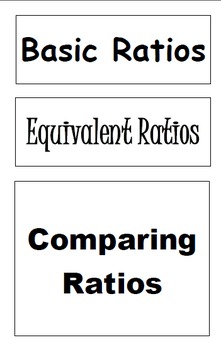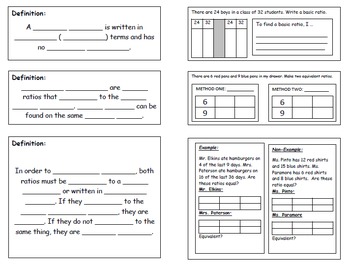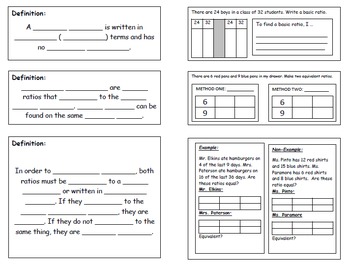Equivalent Ratios and Simplifying Ratios Foldable (Flippable)
Aleisha Roxanne
126 Followers
Resource Type
Standards
CCSS6.RP.A.1
CCSS6.RP.A.3
Formats Included
- Zip
Pages
5 pages
Aleisha Roxanne
126 Followers
What educators are saying
This foldable was perfect to use as a review for my 7th graders before we began our proportional reasoning unit! Thank you!
Description
This is an awesome foldable for any interactive math journal. Understanding the complexities of ratios, simplifying ratios and comparing ratios is difficult for many students. This foldable will simplify the process and ensure that they are ratio professionals in no time at all.
This foldable breaks the basics of simplifying and equivalent ratios into several simple, focused, and progressive steps. The foldable starts by teaching students that a basic ratio is a ratio that is written in simplest form and can be found by dividing both sides by the same common factor. Next, it introduces the concept of creating equivalent ratios by multiplying and/or dividing both sides by the same amount. Finally, students are shown that the simplest way to compare ratios is to simplify them to the basic ratio. The same basic ratio means they are equivalent ratios. This is the perfect tool for any struggling student!
This foldable breaks the basics of simplifying and equivalent ratios into several simple, focused, and progressive steps. The foldable starts by teaching students that a basic ratio is a ratio that is written in simplest form and can be found by dividing both sides by the same common factor. Next, it introduces the concept of creating equivalent ratios by multiplying and/or dividing both sides by the same amount. Finally, students are shown that the simplest way to compare ratios is to simplify them to the basic ratio. The same basic ratio means they are equivalent ratios. This is the perfect tool for any struggling student!
Total Pages
5 pages
Answer Key
Included
Teaching Duration
30 minutes
Report this resource to TPT
Reported resources will be reviewed by our team. Report this resource to let us know if this resource violates TPT’s content guidelines.
Standards
to see state-specific standards (only available in the US).
CCSS6.RP.A.1
Understand the concept of a ratio and use ratio language to describe a ratio relationship between two quantities. For example, “The ratio of wings to beaks in the bird house at the zoo was 2:1, because for every 2 wings there was 1 beak.” “For every vote candidate A received, candidate C received nearly three votes.”
CCSS6.RP.A.3
Use ratio and rate reasoning to solve real-world and mathematical problems, e.g., by reasoning about tables of equivalent ratios, tape diagrams, double number line diagrams, or equations.




